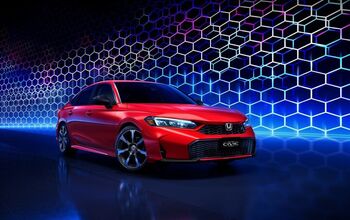Chevrolet Volt Fire Solution Expected Soon, Coolant Leak May Be The Culprit

General Motors is moving closer to a solution for the fires that occurred in Volts after crash testing earlier this year.
Fox News reported yesterday that, according to an unnamed source, fires sparking inside Chevrolet‘s lauded green car might be caused by coolant crystallizing on the car’s battery after a crash, leading to a short circuit.
Since then, Reuters reported that GM is moving towards a set of dealership-implemented fixes to ensure post-crash safety in the cars, though the solution isn’t finalized.
“To the best of my knowledge, we’re not discussing exact solutions at this point,” GM spokesman Rob Peterson said.
Despite that, rumored solutions continue to surface by unnamed sources. Among those unofficial fixes, it seems that GM might laminate the 400-pound battery pack as well as strengthen the casing around it. They may also take steps to better protect against coolant leakage after a crash.
While those possibilities aren’t certain, GM senior management expects a solution by the end of the week. Barring demand by U.S. safety regulators for a deeper-reaching solution, the fix is expected to cost less than $1 million, or roughly $1000 per car.
GM is also offering current Volt owners loaner cars to drive until their vehicle is bolstered against the potential disaster. The aggressive repair policy signals how serious GM is about making the Volt their symbol of future progress.
As far as the EV market is concerned, others are on the way, but for now the Volt’s sole competitor is the Nissan Leaf. The key difference between the two is that the Leaf runs solely on battery power, whereas the Volt has a 1.4-liter gasoline engine that extends driving range. The Leaf didn’t experience the same problems after crash tests, possibly because it doesn’t a use liquid-cooled battery.
Last week GM CEO, Dan Akerson told the Associated Press that GM plans to buy back Volts from any customers concerned about the cars catching fire. He also maintained that they are safe to drive and that owners shouldn’t worry about the issue.
“I think it behooves everyone including General Motors and all of our competition, but more importantly our customers, that we get it right,” Akerson said.
Getting it right definitely involves fixing hazardous issues, but how right is it that GM knew about the problem as early as May without making the public aware? In an earlier story, we reported that it’s possible both GM and the NHTSA knew about the problem but failed to disclose it until last November.
For now, Akerson seems confident in GM’s solution, citing that Lexus had quality issues when they started, but that Toyota dealt swiftly with the issues and pushed the brand on to be a success.
[Sources: Reuters]

Luke is an energetic automotive journalist who spends his time covering industry news and crawling the internet for the latest breaking story. When he isn't in the office, Luke can be found obsessively browsing used car listings, drinking scotch at his favorite bar and dreaming of what to drive next, though the list grows a lot faster than his bank account. He's always on <A title="@lukevandezande on Twitter" href="http://twitter.com/lukevandezande">Twitter</A> looking for a good car conversation. Find Luke on <A title="@lukevandezande on Twitter" href="http://twitter.com/lukevandezande">Twitter</A> and <A title="Luke on Google+" href="http://plus.google.com/112531385961538774338?rel=author">Google+</A>.
More by Luke Vandezande































Comments
Join the conversation
Maybe Luke Vandezande needs to get out more and learn that there are numerous other cars that compete with the Volt, such as the Toyota & Honda hybrids (Prius, Insight & many others including Ford hybrids). The Volt is not comparable to the Nissan Leaf as the Leaf has no internal combustion engine, which the Volt surely does.